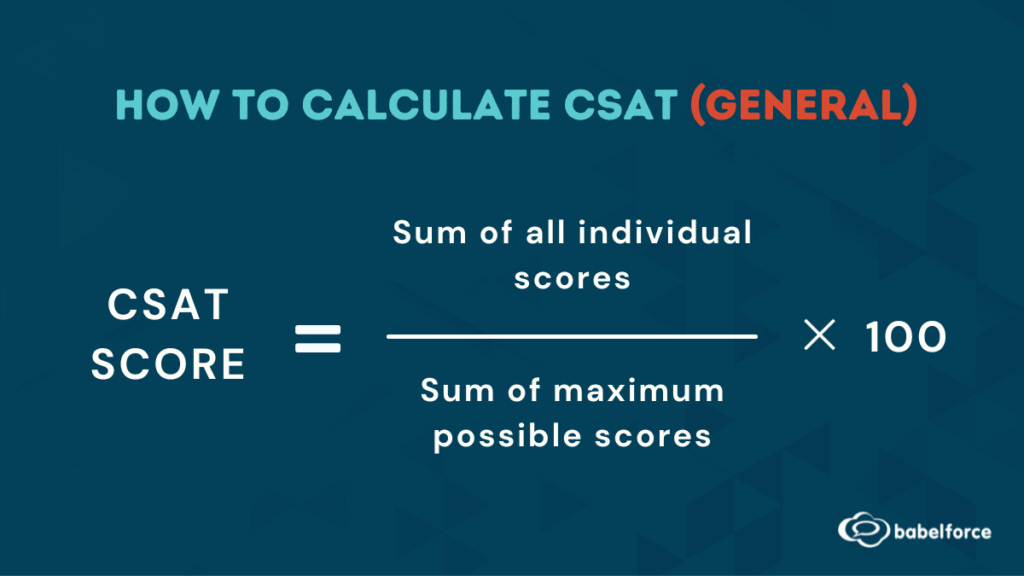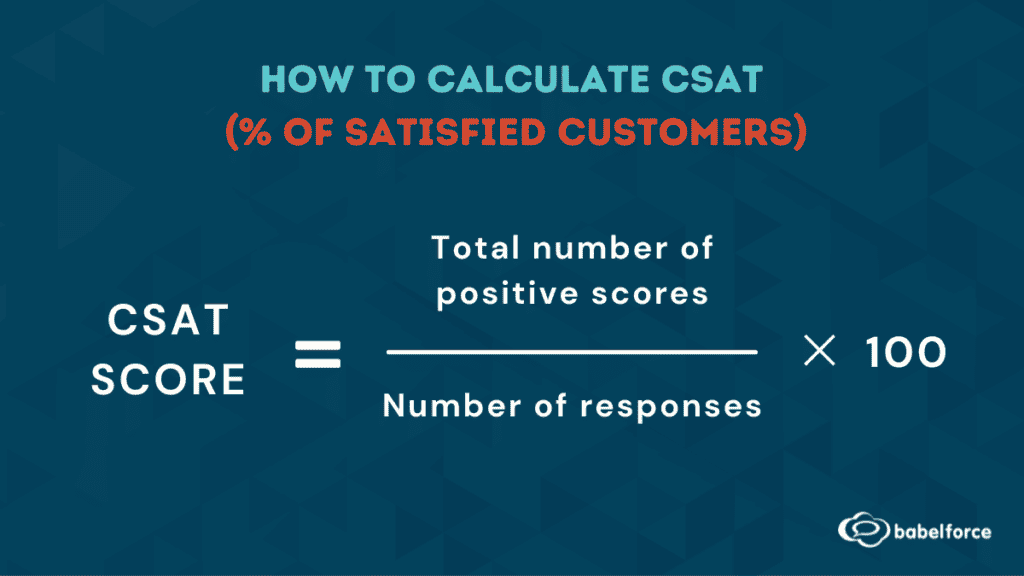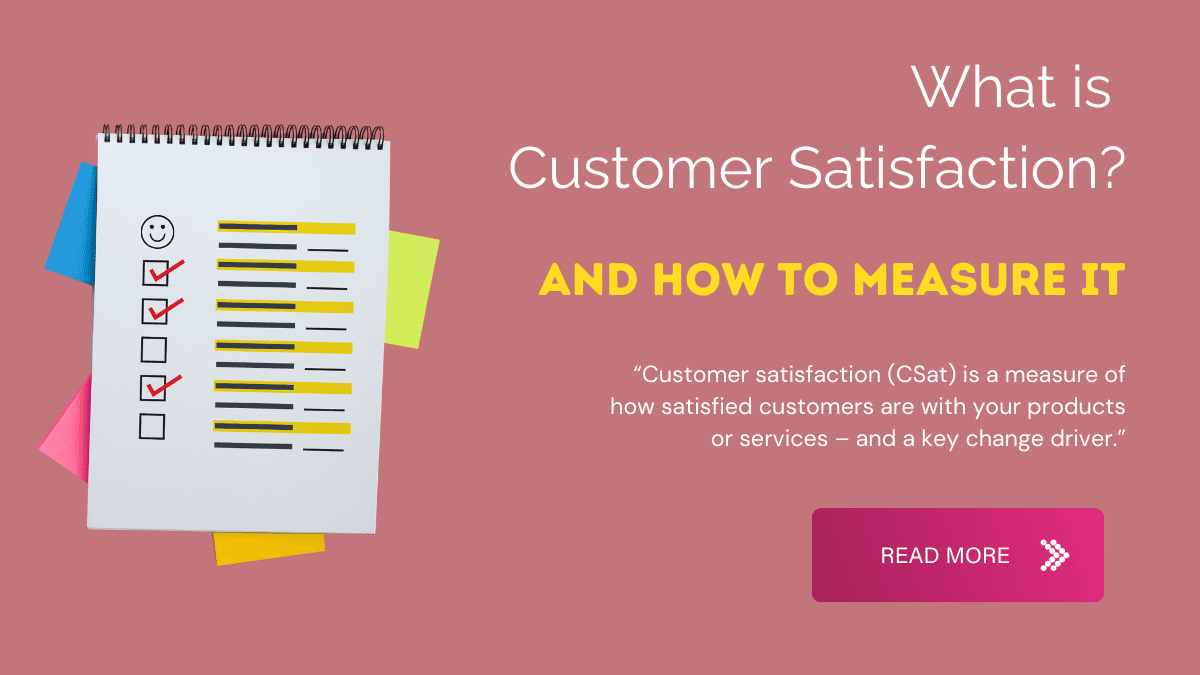Customer satisfaction, also known as CSat, is a measure of how satisfied customers are with the products or services offered by a company. It is a key metric businesses used to understand and improve customer experience. Customer satisfaction can be measured in various ways such as surveys, feedback forms, and online reviews.
Generally, CSat will track factors such as:
- Product or service quality
- Timeliness of delivery or service
- Ease of use or convenience
- Customer support and responsiveness
- Value for money spent
In this article:
How is CSat measured?
You can measure customer satisfaction by asking customers to rate their experience on a scale. Most businesses use a 5-point scale, with 1 being very dissatisfied and 5 being very satisfied. This is known as a Likert scale.
This data is usually gathered by survey – which can be sent by email, pushed to the end user of an app, or triggered at the end of a customer service interaction.
It’s important to be clear in the survey which value matches which satisfaction level.
Some businesses will choose to gather satisfaction data on specific topics such as:
- Product quality
- Efficiency of the service
- Customer service
Once you have your survey responses, it’s time to calculate your CSat score.
For a general percentage measure of customer satisfaction, divide the sum of all individual scores by the maximum possible total score, and multiply by 100.
So that’s ‘the total score from the answers you got’ divided by ‘the total score if every customer had scored 5 out of 5’, multiplied by 100.

Alternatively, you can use the data to calculate the percentage of satisfied customers,
First calculate the total number of positive responses.
That is, how many people answered 4-5 on a 5 point scale.
Then divide that by the number of responses.
And multiply by 100.

Why is CSat important?
CSat helps you understand how your customers feel about your business and the products or services you offer. This gives you valuable insights into what’s working well and what needs improvement.
Sometimes, businesses think they know what their customers want or need, but it’s not until they measure CSat that they realize customers have a different perception.
A low CSat score can alert you to potential problems or gaps in your product or service offerings, and when measured at scale, you can spot trends and patterns.
And what does this mean for your business? It means you can adjust and improve based on real feedback from your customers.
What factors affect CSat?
There are several factors that can affect CSat. Here’s a breakdown of each of them below.
Response time
These days, customers expect quick, efficient service. More specifically, 46% of customers expect companies to respond to their email queries in less than 4 hours and 90% want an instant response when using chat support.
Meanwhile, two-thirds of customers are not willing to wait on hold for more than two minutes. If your response time doesn’t match customer expectations, it can lead to a decrease in CSat.
Empathy in customer service
Human touch matters – perhaps even more so now that so many customer interactions are automated. According to Zendesk, 49% of consumers say they want to speak to an empathic agent. Demonstrating empathy, actively listening, and showing concern for customers can greatly improve their overall satisfaction.

Frictionless experiences
Companies that want to improve CSat levels, usually focus on “delighting” their customers or “exceeding expectations”. But the latest research points to this being a bit of a red herring. According to Gartner, reducing customer effort can have a bigger effect on customer loyalty.
Their research shows that 94% of customers with low-effort interactions will repurchase from the same company. Companies can even measure this as a Customer Effort Score (yes, another metric to add to your list).
Personalization
Today’s consumers expect tailor-made experiences. A report from McKinsey & Company showed that 71% of customers expect to experience personalized interactions across channels. It can be a significant revenue driver too. Companies that grow quickly typically generate 40% of their revenue through personalization compared to slower-growing brands.
This goes beyond just using the customer’s name. You need to be able to anticipate their needs and provide relevant recommendations or solutions.
Omnichannel Support
Gone are the days when customers would only interact with companies through one channel. Today, they expect to be able to connect with businesses across multiple channels seamlessly and have a consistent experience.
Note that consistency is where ‘omnichannel’ differs from ‘multichannel’ – it’s about providing a unified experience rather than just offering different channels to choose from.
Tellingly, research shows that brands which offer an omnichannel experience see a 9.5% yearly increase in annual revenue compared to those that don’t. Customers don’t want to repeat themselves or start over when switching channels – they want a seamless, connected experience.
How can you improve your CSat?
There are many ways to improve your CSat score. You might want to circle back to your CSat feedback and see where you can make improvements. Here are some ideas to get you started:
Integrate your systems
Are you providing a disconnected experience for your customers? If so, it’s time to implement an omnichannel CX strategy, which involves integrating your systems. All your channels (phone, email, chat, etc.) should be connected to provide a unified experience for the customer.
Start using a VoiceBot to reduce wait times
With advances in AI and Natural Language Processing (NLP), VoiceBots are becoming an increasingly powerful tool for contact centers. They can handle customer inquiries, offer self-service options, and connect customers to human agents when necessary.
This reduces wait times and frustration for customers, leading to a more positive experience and higher CSat scores.
Train your agents to be empathetic
Empathy plays a crucial role in customer satisfaction. Make sure your agents are trained in active listening and can effectively handle difficult situations with customers. Call whispering and role-playing exercises are a great way to improve empathy skills.
To summarize
CSat scores are a key metric to measure the success of your contact center.
If yours are not where you want them to be, there are several ways to improve them. Most of these will involve either making some changes to your processes or investing in technology.
But the payoff is worth it – happy customers lead to repeat business, which is an efficient way to boost revenue!





